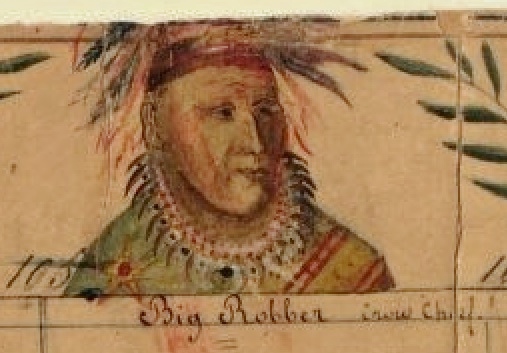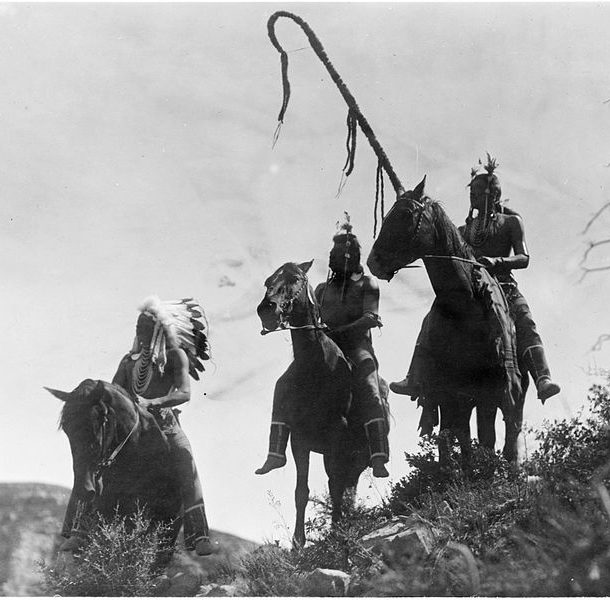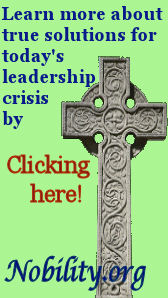Having Ignored and Scorned Our Lady’s Fatima Message, the Punishments Foreseen by the Mother of God Await Us
Father De Smet’s escort consisted of ten Indians. They crossed two mountain chains and made one hundred and fifty miles in three days across a country infested with Blackfeet, without, however, encountering one of the tribe. Then came a few days’ rest with a friendly tribe before setting out for the Crows.
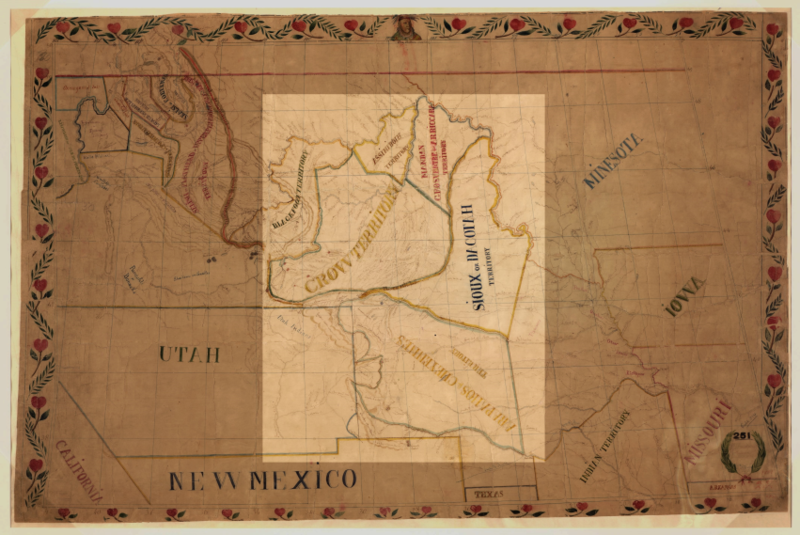
Father De Smet map of the 1851 Fort Laramie Indian territories (the light area). Jesuit missionary De Smet drew this map with the tribal borders agreed upon at Fort Laramie in 1851. The map has the Crow territory west of the Sioux territory as written in the treaty, and the Bighorn area as the heart of the Crow country.
“The Crows spied us from afar, and when they recognized us cried out ‘The Black Robe! The Black Robe!’ Men, women, and children to the number of about three thousand poured out of their huts like bees out of a hive. My entry into the village occasioned a wild scene, of which I found myself, ex abrupto, the principal actor. The chiefs and highest braves, numbering about fifty in all, suddenly pressed around me, impending my passage, one pulling me to the right, another to the left; a third held my cassock, and an athlete wished to carry me, all talking at once and appearing to be quarreling.
“Not withstanding the language, I wondered if I should laugh or be serious. Happily, the interpreter relieved my embarrassment, telling me that this tumult was but an expression of politeness and high regard for my person. All solicited the honor of feeding and lodging the Black Robe. Acting upon the interpreter’s advice, I chose my host. The others immediately fell back as I followed the chief into his lodge, the largest and most splendid one in the camp. Then the Crows began to pour into the lodge, offering me every conceivable attention. The social calumet, symbol of Indian unity and brotherhood, was kept lighted and passed around to the entire assembly.”*
“Wild with joy, the Indians declared this to be the greatest day of their lives. They entreated me to take pity upon the tribe and remain to teach them and their children to know and serve the Great Spirit. I promised them a Black Robe, on condition that the chief would undertake to abolish thieving, so frequent among them, and reform the degrading corruption of morals that reigned in his tribe.
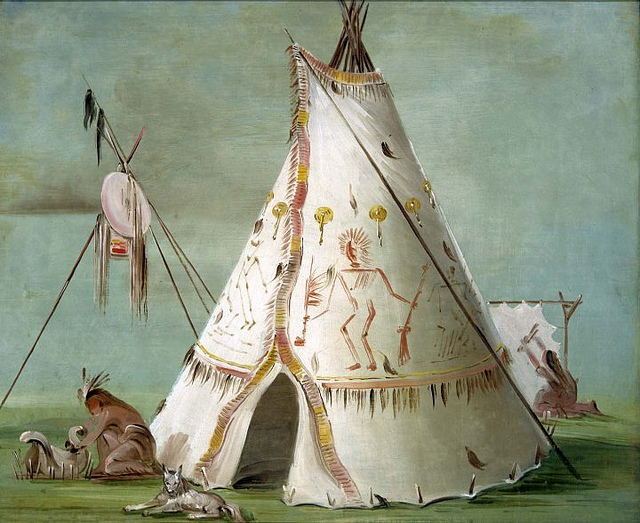
Crow Lodge of Twenty-five Buffalo Skins, 1832–33 by George Catlin. These tipi’s were sufficiently large for forty men to dine under.
“These Indians have one thing in their favor upon which I base great hopes: So far they have resisted the efforts of American merchants to introduce intoxicating liquors into their tribe. ‘What is your fire-water good for?’ said the chief. ‘It only does evil. It burns the throat and stomach and makes a bear of a man: he bites, growls, yells, and finally falls down like a dead body. Take this liquor to our enemies; they will kill each other, leaving their wives and children in a pitiable condition. We do not want whiskey. We are crazy enough without it.’
“Before departing I witnessed a touching scene. The chief asked to see my crucifix. Taking advantage of the occasion I told them about Our Lord’s sufferings, why He gave His life for us, at the same time putting the crucifix into his hands. Reverently he kissed it, and pressing the image of Our Savior to his breast, with eyes lifted toward heaven, cried out: ‘Oh, Great Spirit, have pity upon Thy children, and show them mercy.’” (Letter to Francis De Smet, St. Louis, Nov. 3, 1842.)
* “These Indians,” wrote Father De Smet, “are without doubt the most enquiring, the most eager for instruction, the cleverest and most civilized of the Western tribes, and, furthermore, great friends and admirers of the white man. They plied me with questions, and among others wished to know the population of the white man. ‘Count,’ said I, ‘the blades of grass in your vast prairie and you will then have some idea of their number.’ This occasioned general mirth. No such thing was possible, they said, but they nevertheless understood what I meant. I then told them of the white man’s villages—London, Paris, etc.; of towers high as mountains, and churches vast enough to contain all the Crows and Blackfeet at one time; of the streets in these great villages filled with hurrying men and women in more compact masses than the buffaloes ranging their prairies. Such marvels left them speechless with wonder; and when I described moving tents drawn by a machine that vomited forth smoke and outdistanced the fleetest horse; boats that traversed the ocean, transporting in a few days the inhabitants of an entire village from one country to another; men rising in the air and soaring in the clouds like mountain eagles, their astonishment knew no bounds. Closing their hands over their mouths, they emitted screams indicating admiration. ‘The Master of life is great,’ said the chief, ‘and the white men are His favorites.’”
Laveille, S.J., The Life of Father De Smet, S.J. (1801–1873), trans. Marian Lindsay (New York: P. J. Kenedy & Sons, 1915), 149–50.
Short Stories on Honor, Chivalry, and the World of Nobility—no. 788
